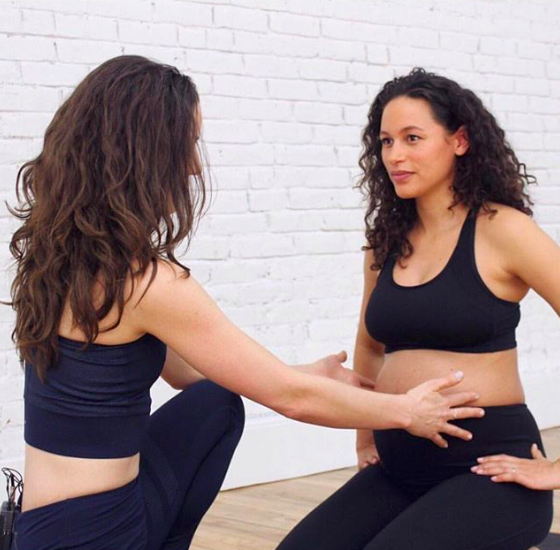
How do you have diastasis recti? Here’s a quick post on the nitty gritty!
In watered down terms, the definition of Diastasis Recti (DR) is the separation of the connective tissue (also known as the linea alba) holding the two halves of the abdominal wall together.
Our linea alba by the end of pregnancy stretches about 3cm and our bodies are MADE to do that in order to accommodate a growing belly and baby. Problems arise when we don’t have the proper body mechanics to regulate what’s called “intra-abdominal pressure” in order to decrease pressure on the linea alba. But, that’s a topic for a future blog post!
If Diastasis Recti (DR) occurs, the integrity of your core is compromised. You may be more susceptible to issues like pelvic floor dysfunction, incontinence, back pain, developing a hernia…or you may also not have any symptoms at all!
So, back to the question, “How do I know if I have DR?” Here is a quick (but inconclusive) list of things to look for.
You may have Diastasis Recti if…
You are on your 2nd, 3rd (or more) pregnancy.
You are carrying multiples.
You have had a C-section.
You have a belly pooch that continues to make you look pregnant way beyond 3-4 months postpartum.
The skin on your is stretched/sagging/wrinkly looking (beyond holding extra postpartum weight)
You see coning, doming or a small mound when you lay down, sit up or put forward flexion into your body.
You have incontinence…even just a little.
You have chronic back pain
You feel like you can’t regain core strength no matter what do.
You can insert 2-3 fingers or more through your linea alba.
You have a protruding belly button during pregnancy
You have poor posture.
You are a chest or stress breather.
You’ll notice that you may be able to check off many of the following symptoms. Don’t panic! It’s important to note that having any one of these does not conclusively mean you have Diastasis Recti. Our advice? Get yourself to a pelvic floor therapist. They are the professionals who can give you the most accurate reading. FPC feels strongly that ALL women should see a pelvic floor PT during pregnancy and postpartum regardless of experiencing any specific symptoms.
The most important take away is this: Education is key! You need to be informed on the mechanics of how you are moving during pregnancy and postpartum in order to fully empower yourself to avoid developing this all too common condition. This education along with the proper training is the only true prevention.
Wondering where you can learn more?
Our workshop, “Protecting Your Core For Birth And Postpartum” is offered every 6 weeks or so. Sign up for this hour and half workshop and get all your questions answered + learn what you can be doing right away to start building strength and stability in your core.